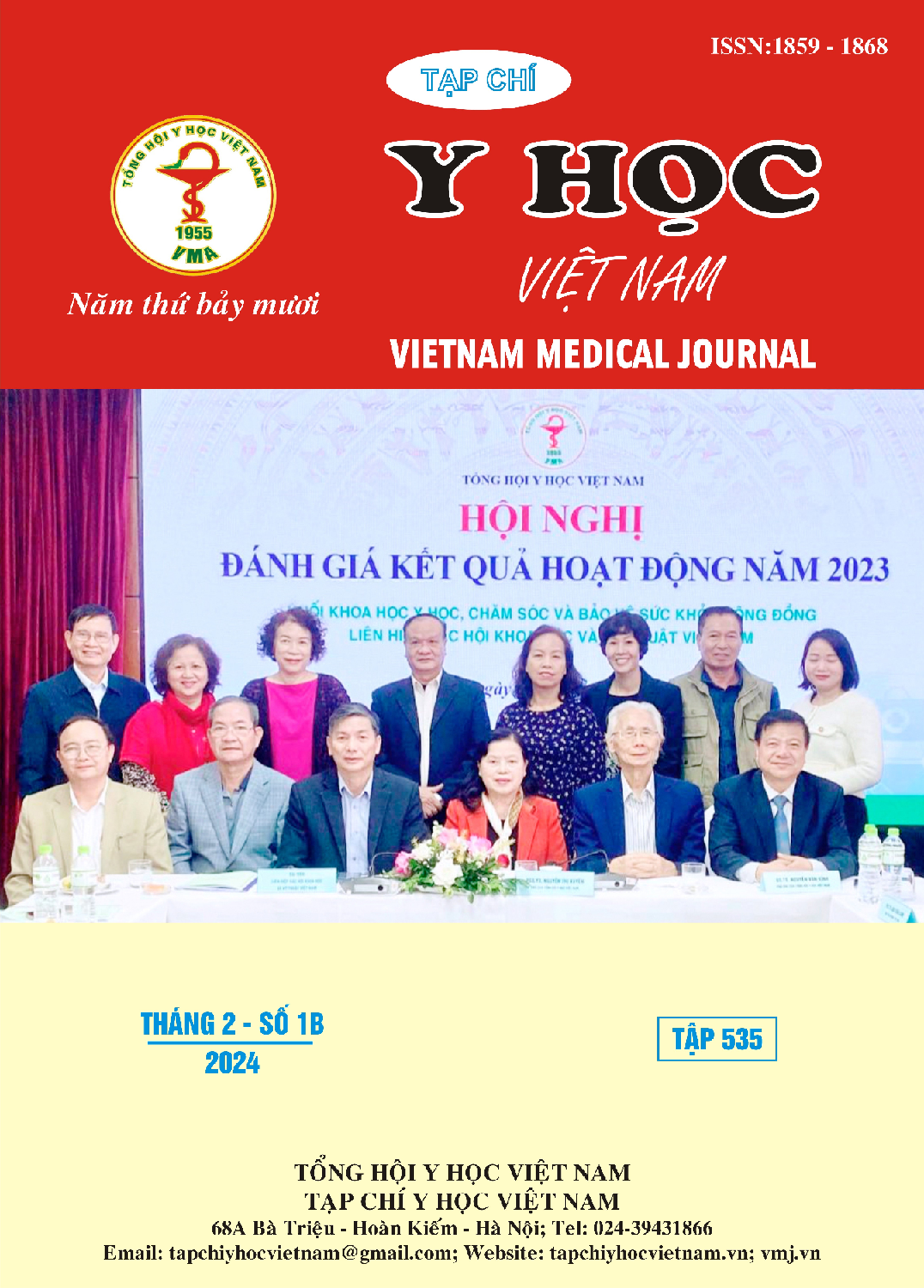PREVALENCE OF DENGUE VIRUS TYPES IN PATIENTS SUSPECTED DENGUE HEMORRHAGIC FEVER AT NGUYEN TRI PHUONG HOSPITAL IN 2022
Main Article Content
Abstract
Introduction: There are differences in clinical characteristics as well as the impact on the diagnosis of dengue hemorrhagic fever (DHF) among the four dengue virus types. Monitoring the dengue virus serotype will help predict the development of dengue hemorrhagic fever and take appropriate prevention and treatment. Objective: To determine the prevalence of Dengue virus types in patients suspected of Dengue hemorrhagic fever at Nguyen Tri Phuong Hospital from 07/2022 to 12/2022. Subjects and methods: A cross-sectional descriptive study was performed on the plasma samples of patients who were suspected of Dengue hemorrhagic fever and were tested for NS1 antigen and Dengue-specific IgM. The RT real-time PCR assay was performed to determine four Dengue virus types in the plasma patients. Results: Among 697 plasma samples of patients with suspected dengue fever admitted into the study. There are 245 samples (35.2%) were positive for Dengue virus by RT real-time PCR. These patients infected with the Dengue virus are mainly aged 21-40 years old and come for treatment from the 3rd day of illness onwards. The most prevalent Dengue virus type is type 2, accounting for 82.0% of cases, followed by types 1 and 4 at 15.1% and 2.0%, respectively. Two cases of coinfection with two types of Dengue virus were recorded: coinfection with type 1 and type 2; type 2 and type 4. Conclusions: The patient population at Nguyen Tri Phuong Hospital in 2022 has a high prevalence of Dengue virus infection, with Dengue type 2 being the most common.
Article Details
Keywords
Dengue hemorrhagic fever, Dengue virus type, Dengue type 2.
References
2. Do, T.T.T., et al., Climatic-driven seasonality of emerging dengue fever in Hanoi, Vietnam. BMC Public Health, 2014. 14(1): p. 1078.
3. Huy, B.V., et al., Epidemiological and Clinical Features of Dengue Infection in Adults in the 2017 Outbreak in Vietnam. Biomed Res Int, 2019. 2019: p. 3085827.
4. Tantawichien, T., Dengue fever and dengue haemorrhagic fever in adolescents and adults. Paediatr Int Child Health, 2012. 32 Suppl 1(s1): p. 22-7.
5. Nguyễn Đức Thuận, Đặng Thành Chung, Nghiên cứu tỉ lệ type virus dengue ở bệnh nhân nhi trong một số đợt dịch tại khu vực miền nam Việt Nam. Tạp chí Y học Việt Nam, 2021. 503(1): p. 61-64.
6. Van Le, T., N.T.T. Van, N.H. Quan, and P.T. Duoc, Phylogeny of Dengue virus type 2 isolated in the Central Highlands, Vietnam. Revista de Biología Tropical, 2017. 65(2): p. 819-826.
7. Shan, X., et al., Evaluation of the diagnostic accuracy of nonstructural protein 1 Ag-based tests for dengue virus in Asian population: a meta-analysis. BMC Infect Dis, 2015. 15: p. 360.
8. Senaratne, U.T.N., et al., Dengue virus co-infections with multiple serotypes do not result in a different clinical outcome compared to mono-infections. Epidemiol Infect, 2020. 148: p. e119.


